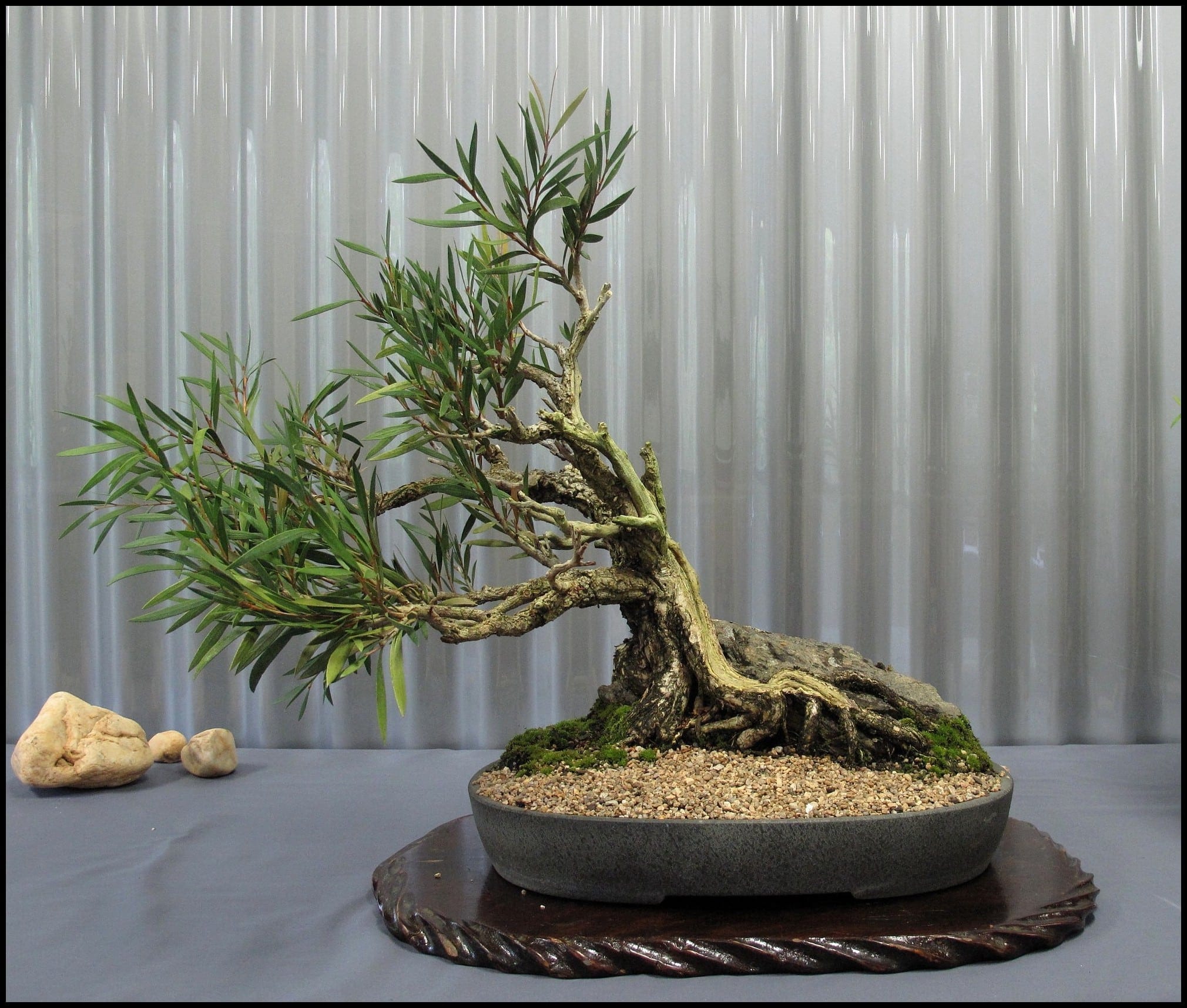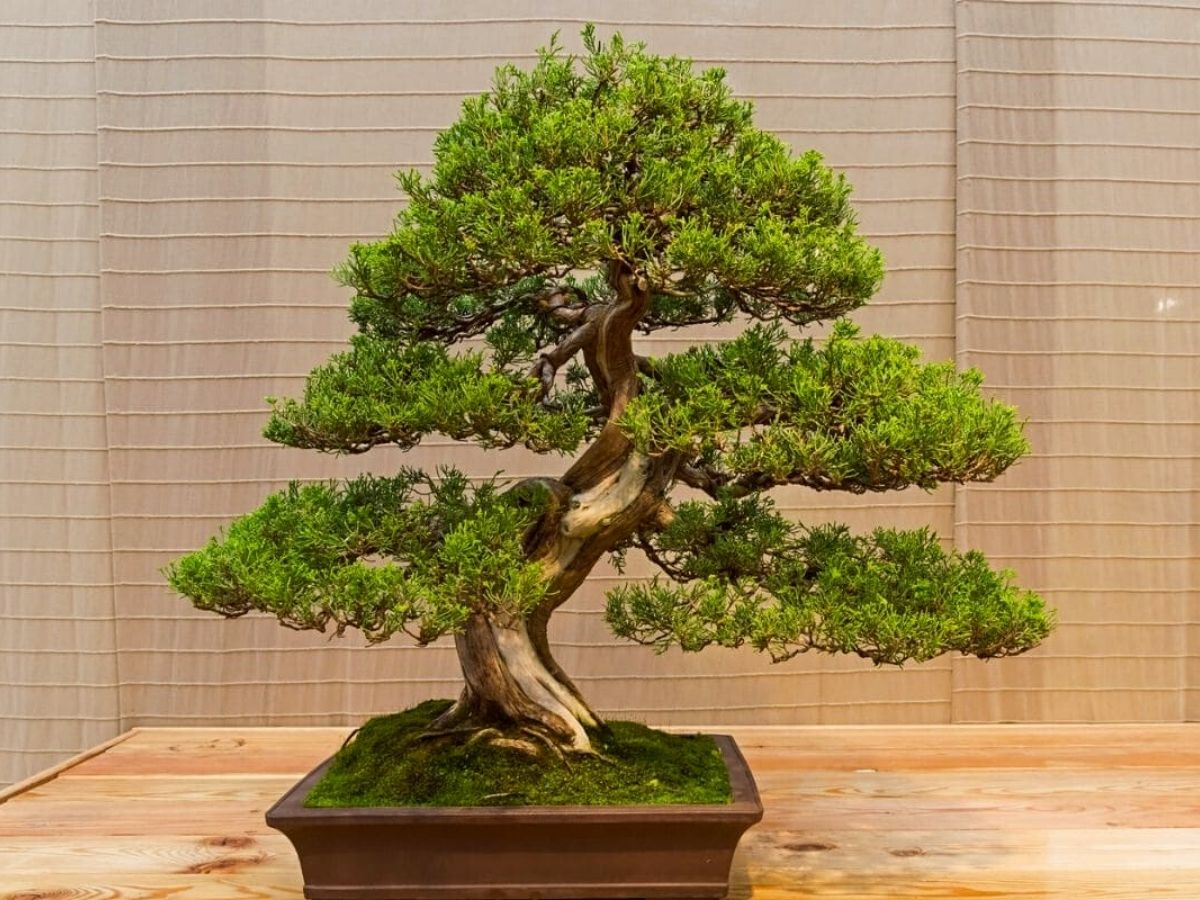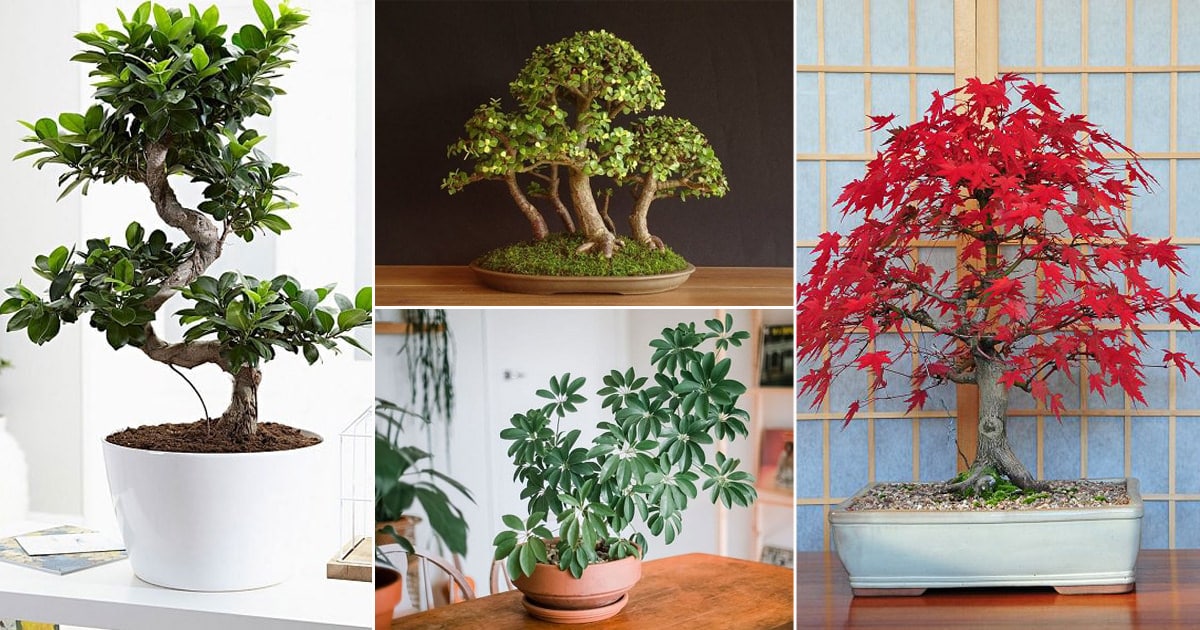Unlocking the Secrets of Indoor Bonsai Tree Care
Growing bonsai trees indoors can be a rewarding and challenging experience. While many people believe that bonsai trees require outdoor environments to thrive, the truth is that with proper care, these miniature trees can flourish in indoor settings. In fact, indoor bonsai trees can benefit from year-round growth and improved air quality, making them a great addition to any home or office.
One of the primary concerns when growing bonsai trees indoors is providing the right environment. Bonsai trees need bright, indirect light to photosynthesize and grow. Placing them near a sunny window or using grow lights can help supplement natural light. Additionally, maintaining a consistent temperature between 65-75°F (18-24°C) and humidity levels above 50% can help create an ideal environment for indoor bonsai trees.
Another crucial aspect of indoor bonsai tree care is choosing the right species. Some species, such as Ficus and Chinese Elm, are more tolerant of indoor conditions and can thrive in low-light environments. Others, like Juniper and Pine, require more light and may need to be placed in sunnier locations. By selecting a species that is well-suited for indoor growth, you can set your bonsai tree up for success.
Indoor bonsai trees also require regular watering and fertilization. Over-watering is a common mistake that can lead to root rot and other problems. Using a well-draining soil mix and a balanced fertilizer can help prevent these issues. It’s also essential to monitor your tree’s water and nutrient needs, adjusting your care routine as necessary.
By understanding the unique needs of indoor bonsai trees, you can create a thriving environment that allows your tree to flourish. With proper care and attention, your indoor bonsai tree can become a stunning and rewarding addition to your home or office. Whether you’re a seasoned bonsai enthusiast or just starting out, growing a bonsai tree indoors can be a fun and rewarding experience.
So, can bonsai trees live indoors? The answer is a resounding yes. With the right environment, care, and attention, these miniature trees can thrive in indoor settings. By following the tips and guidelines outlined above, you can create a beautiful and thriving indoor bonsai tree that brings joy and serenity to your space.
Choosing the Right Bonsai Tree Species for Indoor Growth
When it comes to growing bonsai trees indoors, selecting the right species is crucial for success. Not all bonsai tree species are created equal, and some are better suited for indoor growth than others. By choosing a species that is well-suited for indoor conditions, you can ensure that your bonsai tree thrives and flourishes in its new environment.
One of the most popular species for indoor bonsai trees is the Ficus (Ficus spp.). Ficus trees are known for their ability to tolerate low light conditions, making them an ideal choice for indoor spaces with limited natural light. They are also relatively small in size, making them a great choice for small apartments or offices.
Another popular species for indoor bonsai trees is the Juniper (Juniperus spp.). Juniper trees are known for their ability to tolerate dry conditions, making them a great choice for indoor spaces with low humidity. They are also relatively easy to care for, making them a great choice for beginners.
The Chinese Elm (Ulmus parvifolia) is another popular species for indoor bonsai trees. Chinese Elm trees are known for their ability to tolerate a wide range of lighting conditions, making them a great choice for indoor spaces with varying light levels. They are also relatively small in size, making them a great choice for small apartments or offices.
Other species that can thrive indoors include the Satsuki Azalea (Rhododendron satsuki), the Serissa (Serissa foetida), and the Zelkova (Zelkova serrata). When choosing a species, be sure to research its specific needs and characteristics to ensure that it will thrive in your indoor environment.
By selecting a species that is well-suited for indoor growth, you can ensure that your bonsai tree thrives and flourishes in its new environment. Remember to research the specific needs and characteristics of your chosen species to ensure that you provide the best possible care.
How to Create a Perfect Indoor Environment for Your Bonsai Tree
Creating a perfect indoor environment for your bonsai tree is crucial for its survival and growth. Bonsai trees require specific conditions to thrive, and indoor environments can be challenging to replicate. However, with the right equipment and techniques, you can create an ideal environment for your bonsai tree to flourish.
Lighting is one of the most critical factors in creating a perfect indoor environment for your bonsai tree. Bonsai trees require bright, indirect light to photosynthesize and grow. Placing your bonsai tree near a sunny window or using grow lights can help supplement natural light. However, be careful not to expose your tree to direct sunlight, as this can cause scorching and damage.
Temperature is another essential factor to consider when creating a perfect indoor environment for your bonsai tree. Most bonsai trees prefer daytime temperatures between 65-75°F (18-24°C) and nighttime temperatures around 55-65°F (13-18°C). Avoid placing your bonsai tree near heating or cooling vents, fireplaces, or drafty windows, as this can cause temperature fluctuations.
Humidity is also crucial for bonsai trees, as they prefer a humid environment to thrive. You can increase the humidity around your bonsai tree by placing it on a tray filled with water and pebbles or using a humidifier. This will help maintain a humid microclimate around your tree and prevent dryness.
Air circulation is also essential for bonsai trees, as it helps prevent fungal diseases and promotes healthy growth. Make sure to provide good air circulation around your bonsai tree by placing it at least 6-8 inches away from any walls or surfaces.
Using grow lights and humidifiers can help replicate outdoor conditions and create a perfect indoor environment for your bonsai tree. Grow lights can provide the necessary light spectrum and intensity for your tree to photosynthesize and grow, while humidifiers can maintain a humid environment and prevent dryness.
By creating a perfect indoor environment for your bonsai tree, you can ensure that it thrives and flourishes. Remember to monitor your tree’s specific needs and adjust your environment accordingly. With the right equipment and techniques, you can create an ideal environment for your bonsai tree to grow and thrive indoors.
The Art of Watering and Fertilizing Indoor Bonsai Trees
Watering and fertilizing are two of the most critical aspects of indoor bonsai tree care. Proper watering and fertilization can help promote healthy growth, prevent disease, and maintain the overall health of your bonsai tree. However, over-watering and under-fertilizing can be detrimental to your tree’s health, so it’s essential to understand the art of watering and fertilizing indoor bonsai trees.
Watering your indoor bonsai tree requires a delicate balance. Over-watering can cause root rot, while under-watering can cause stress and disease. To avoid these problems, it’s essential to check the soil moisture regularly. Stick your finger into the soil up to the first knuckle, and if the soil feels dry, it’s time to water. Water your bonsai tree thoroughly, making sure the pot drains well to prevent waterlogged soil.
Fertilizing your indoor bonsai tree is also crucial for its health and growth. A balanced fertilizer that contains equal amounts of nitrogen, phosphorus, and potassium (NPK) is ideal for indoor bonsai trees. You can also use a fertilizer specifically formulated for bonsai trees, which typically contains micronutrients and other essential nutrients. Apply the fertilizer according to the manufacturer’s instructions, and avoid over-fertilizing, which can cause more harm than good.
Using well-draining soil is also essential for indoor bonsai trees. Well-draining soil helps prevent waterlogged soil and root rot, which can be detrimental to your tree’s health. You can create your own well-draining soil mix by combining potting soil, perlite, and vermiculite. This mix will help prevent water from accumulating in the soil and promote healthy root growth.
Another essential aspect of watering and fertilizing indoor bonsai trees is monitoring the tree’s response. Observe your tree’s leaves, trunk, and roots, and adjust your watering and fertilizing schedule accordingly. If you notice any signs of stress, disease, or pests, take action immediately to prevent further damage.
By mastering the art of watering and fertilizing indoor bonsai trees, you can promote healthy growth, prevent disease, and maintain the overall health of your bonsai tree. Remember to monitor your tree’s response and adjust your care routine accordingly. With proper care and attention, your indoor bonsai tree can thrive and flourish.
Pest Control and Common Problems in Indoor Bonsai Trees
Indoor bonsai trees can be susceptible to pests and diseases, which can cause significant damage if left unchecked. Regular monitoring and maintenance are crucial to prevent infestations and ensure the health of your bonsai tree. In this section, we will discuss common pests and problems that can affect indoor bonsai trees and provide solutions and preventative measures to keep your tree healthy.
Spider mites are one of the most common pests that can affect indoor bonsai trees. These tiny, spider-like insects feed on the sap of the tree, causing yellowing or bronzing of the leaves. To control spider mites, use a gentle insecticidal soap or neem oil, and ensure good air circulation around the tree.
Mealybugs are another common pest that can infest indoor bonsai trees. These small, white insects feed on the sap of the tree, causing stunted growth and yellowing leaves. To control mealybugs, use a gentle insecticidal soap or neem oil, and ensure good air circulation around the tree.
Root rot is a common problem that can affect indoor bonsai trees, particularly if the soil is too wet or waterlogged. To prevent root rot, ensure good drainage in the pot, and avoid over-watering. If you notice any signs of root rot, such as soft or mushy roots, repot the tree in fresh, well-draining soil.
Other common problems that can affect indoor bonsai trees include scale, aphids, and whiteflies. Regular monitoring and maintenance are crucial to prevent infestations and ensure the health of your bonsai tree. By providing good air circulation, watering carefully, and fertilizing regularly, you can help prevent pests and diseases and keep your bonsai tree healthy.
Preventative measures are also essential to keep your bonsai tree healthy. Regularly inspect your tree for signs of pests or diseases, and take action immediately if you notice any problems. Use a gentle insecticidal soap or neem oil to control pests, and ensure good air circulation around the tree. By taking these steps, you can help prevent pests and diseases and keep your bonsai tree thriving.
Pruning and Training Techniques for Indoor Bonsai Trees
Pruning and training are essential techniques for maintaining the shape and size of your indoor bonsai tree. Regular pruning helps control the tree’s growth, promotes healthy development, and encourages the formation of a strong root system. Training, on the other hand, involves shaping the tree’s branches and trunk to create a desired shape or style.
There are several pruning techniques that can be used on indoor bonsai trees, including pinching, cutting, and wiring. Pinching involves removing the tips of new growth to encourage branching and promote a fuller tree. Cutting involves removing entire branches or sections of the tree to maintain shape and size. Wiring involves using wire to shape the tree’s branches and trunk into a desired shape.
When pruning your indoor bonsai tree, it’s essential to use the right tools and techniques. Use sharp, clean scissors or pruning shears to avoid damaging the tree’s bark or leaves. Make clean cuts just above a node, and avoid tearing or ripping the bark. Remove any dead or damaged branches to prevent the spread of disease and encourage healthy growth.
Training your indoor bonsai tree involves shaping the tree’s branches and trunk to create a desired shape or style. This can be done using wire, which is wrapped around the branches and trunk to hold them in place. There are several training techniques that can be used, including formal upright, informal upright, and cascade.
Formal upright training involves shaping the tree’s trunk and branches to create a straight, upright shape. Informal upright training involves shaping the tree’s trunk and branches to create a more natural, curved shape. Cascade training involves shaping the tree’s branches to create a flowing, curved shape that cascades down the sides of the pot.
By regularly pruning and training your indoor bonsai tree, you can maintain its shape and size, promote healthy growth, and encourage the formation of a strong root system. Remember to use the right tools and techniques, and to prune and train your tree regularly to achieve the desired shape and style.
Repotting and Soil Selection for Indoor Bonsai Trees
Repotting your indoor bonsai tree is an essential part of its care. As the tree grows, it will eventually outgrow its container and require a larger pot to accommodate its roots. Repotting also provides an opportunity to refresh the soil and provide a nutrient-rich environment for the tree to thrive.
When to repot your indoor bonsai tree depends on the species and age of the tree. Generally, young trees require repotting every 1-2 years, while older trees may only need to be repotted every 3-5 years. It’s essential to monitor your tree’s growth and adjust the repotting schedule accordingly.
Choosing the right soil mix for your indoor bonsai tree is crucial for its health and growth. A well-draining soil mix that is specifically designed for bonsai trees is ideal. This type of soil mix will help prevent waterlogged soil and root rot, while also providing the necessary nutrients for the tree to thrive.
When selecting a potting mix, look for one that contains a combination of ingredients such as peat moss, perlite, and vermiculite. These ingredients will help retain moisture, improve drainage, and provide aeration for the roots. Avoid using regular potting soil, as it can be too dense and may cause waterlogging.
In addition to selecting the right soil mix, it’s also essential to choose a pot that is suitable for your indoor bonsai tree. A shallow pot with good drainage is ideal, as it will help prevent waterlogging and root rot. Avoid using pots that are too deep, as they can cause the roots to become waterlogged and rot.
When repotting your indoor bonsai tree, it’s essential to handle the roots with care. Gently remove the tree from its pot, taking care not to damage the roots. Inspect the roots and trim any that are damaged or circling. Then, place the tree in its new pot, adding fresh soil mix and gently firming it around the roots.
By repotting your indoor bonsai tree regularly and selecting the right soil mix and pot, you can provide a healthy and thriving environment for your tree to grow and flourish.
Common Mistakes to Avoid When Growing Bonsai Trees Indoors
Growing bonsai trees indoors can be a rewarding and challenging experience. However, there are several common mistakes that can lead to poor growth, disease, and even death. By understanding these mistakes and taking steps to avoid them, you can help ensure the health and success of your indoor bonsai tree.
One of the most common mistakes when growing bonsai trees indoors is inadequate lighting. Bonsai trees require bright, indirect light to photosynthesize and grow. Placing your bonsai tree in a low-light area or using low-wattage grow lights can lead to weak and spindly growth. To avoid this mistake, use high-wattage grow lights or place your bonsai tree in a sunny window.
Over-watering is another common mistake when growing bonsai trees indoors. Bonsai trees require well-draining soil and should not be waterlogged. Over-watering can lead to root rot and other problems. To avoid this mistake, use a well-draining soil mix and water your bonsai tree carefully, making sure not to over-water.
Neglecting pruning and training is also a common mistake when growing bonsai trees indoors. Pruning and training are essential for maintaining the shape and size of your bonsai tree. Neglecting these tasks can lead to a tree that is misshapen and unbalanced. To avoid this mistake, prune and train your bonsai tree regularly, using the techniques and tools described in this article.
Other common mistakes when growing bonsai trees indoors include using the wrong soil mix, not providing enough humidity, and not fertilizing regularly. By avoiding these mistakes and following the tips and guidelines outlined in this article, you can help ensure the health and success of your indoor bonsai tree.
By understanding the common mistakes to avoid when growing bonsai trees indoors, you can take steps to prevent them and ensure the health and success of your tree. Remember to provide bright, indirect light, use well-draining soil, and prune and train your tree regularly. With proper care and attention, your indoor bonsai tree can thrive and flourish.






:max_bytes(150000):strip_icc()/indoor-bonsai-tree-f3f558eb4fab4c07bb17e41bdaa9adf4.jpg)

